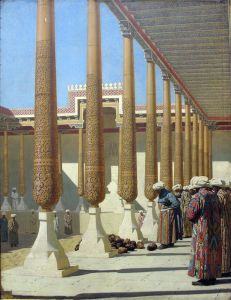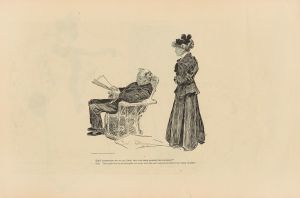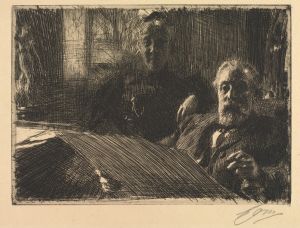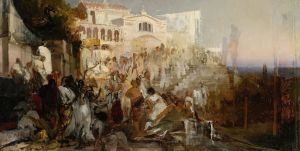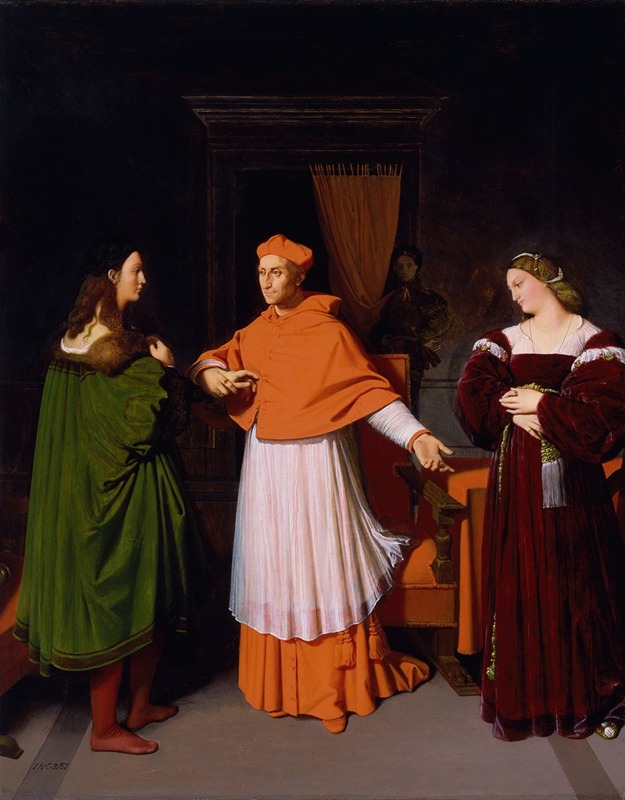
The Betrothal of Raphael and the Niece of Cardinal Bibbiena
A hand-painted replica of Jean Auguste Dominique Ingres’s masterpiece The Betrothal of Raphael and the Niece of Cardinal Bibbiena, meticulously crafted by professional artists to capture the true essence of the original. Each piece is created with museum-quality canvas and rare mineral pigments, carefully painted by experienced artists with delicate brushstrokes and rich, layered colors to perfectly recreate the texture of the original artwork. Unlike machine-printed reproductions, this hand-painted version brings the painting to life, infused with the artist’s emotions and skill in every stroke. Whether for personal collection or home decoration, it instantly elevates the artistic atmosphere of any space.
"The Betrothal of Raphael and the Niece of Cardinal Bibbiena" is a painting by the French Neoclassical artist Jean Auguste Dominique Ingres. Created in 1813, this work is an example of Ingres' fascination with the Italian Renaissance and his admiration for the great masters of that period, particularly Raphael.
The painting depicts a historical and somewhat romanticized event: the betrothal of the renowned Renaissance artist Raphael to Maria Bibbiena, the niece of Cardinal Bernardo Dovizi da Bibbiena. This engagement is a well-documented historical fact, though the marriage never took place due to Raphael's untimely death in 1520.
Ingres' composition is meticulous and reflects his academic training and adherence to classical ideals. The figures are rendered with precise lines and smooth surfaces, characteristic of Ingres' style. The artist's use of color is restrained yet effective, with a focus on creating a harmonious and balanced composition. The attention to detail in the clothing and the setting reflects Ingres' dedication to historical accuracy and his skill in depicting textures and materials.
In the painting, Raphael is shown as a young, handsome man, embodying the ideal of the Renaissance artist. Maria Bibbiena is portrayed with a serene and modest demeanor, reflecting the virtues expected of women of her status during that time. Cardinal Bibbiena, who played a significant role in arranging the betrothal, is also present in the scene, adding a layer of historical context to the composition.
The setting of the painting is an elegant interior, possibly a room in a Renaissance palace, adorned with classical architectural elements. This choice of setting not only situates the figures in their historical context but also showcases Ingres' ability to create a convincing and immersive environment.
"The Betrothal of Raphael and the Niece of Cardinal Bibbiena" is significant not only for its artistic qualities but also for what it reveals about Ingres' interests and influences. The artist had a deep admiration for Raphael, whom he considered a paragon of artistic achievement. This painting can be seen as a tribute to Raphael and an expression of Ingres' desire to align himself with the great tradition of Renaissance art.
Today, the painting is housed in the Musée Ingres in Montauban, France, which holds a significant collection of Ingres' works. It remains an important piece for understanding Ingres' oeuvre and his place within the broader context of 19th-century French painting.
Overall, "The Betrothal of Raphael and the Niece of Cardinal Bibbiena" is a testament to Jean Auguste Dominique Ingres' technical skill, his reverence for the past, and his ability to bring historical subjects to life with elegance and precision.





